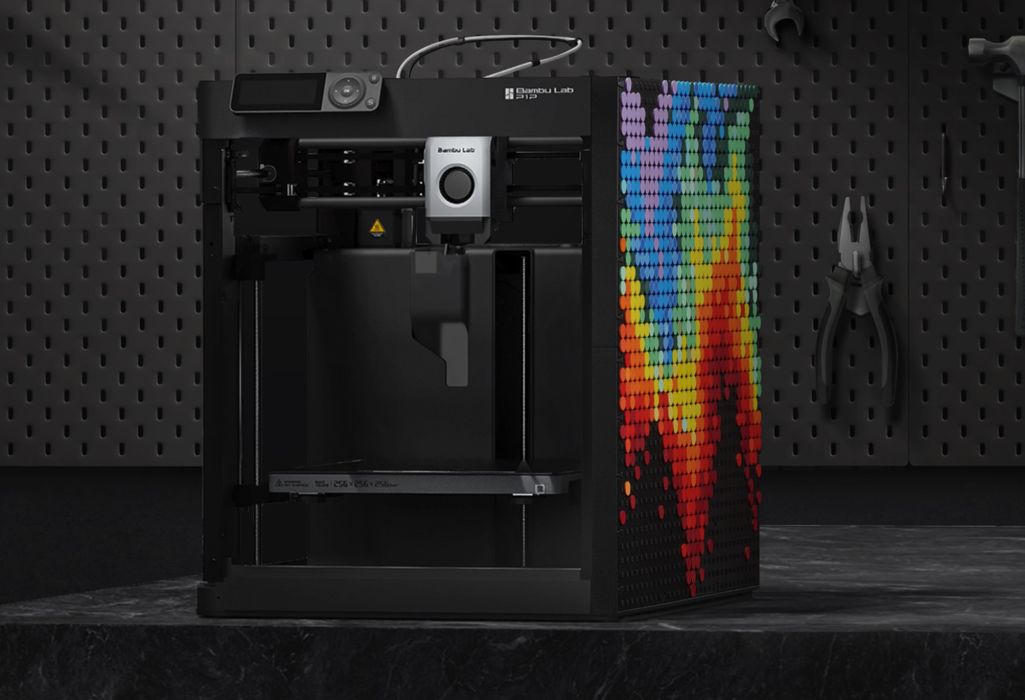
It seems the 3D print world is rapidly shifting to high-speed devices, and this change will significantly impact many aspects of the industry.
For over a decade, almost all FFF equipment has operated at relatively slow print speeds, typically ranging from 30-80mm/s print head movement. This produced, after machine and parameter tuning, very good quality results. Today’s typical inexpensive desktop units produce prints of a quality that was available only on higher-end gear years ago.
Now, things are starting to change, driven by a combination of software, hardware, and competitive factors.
Software Advancements: Klipper Firmware
In the software domain, the significant change has been the introduction and growing use of Klipper firmware. The majority of desktop FFF 3D printers use Marlin firmware, but those who ventured into recent versions of Klipper found a unique feature called “input shaping.” Essentially, it is a way to dynamically adjust machine movements to compensate for the vibration of the toolhead that occurs when the direction of movement changes abruptly.
Those vibrations are easily seen on speed tests, where you see a kind of “echo” at corners or other structures where the print head had to quickly stop or change direction. This “ghosting” is really what prevents FFF 3D printers from running much faster, and input shaping seems to fix it, if tuned properly.
Note that Marlin has also introduced a form of input shaping in very recent releases that will no doubt be taken up by 3D printer manufacturers that already use Marlin: if they use an up-to-date version of Marlin, they automatically have the feature.
Hardware Shift: CoreXY Motion System
On the hardware side, one of the biggest issues is the motion system. The most popular motion system design is the i3, which creates a Y-axis by shifting the print plate forwards and backwards during the print job.
The i3 concept enabled a way to build machines inexpensively, but it also created a barrier for high-speed printing. Enter the CoreXY concept, an ingenious configuration of motors and belts that enables the printhead to move freely in XY directions and does NOT require the print plate to move. This eliminates the skyscraper effect described above.
In addition, the CoreXY motion system does not have any motors (aside from the extruder motor) on the moving parts of the motion system. This greatly lessens the weight and momentum in motion, and significantly assists directional changes. The result is a standard hardware design that can handle higher print speeds.
The Competitive Effect in 3D Printing Industry
Finally, there’s the competitive effect. Someone (Bambu Labs) finally put all these together and made a rather nice (but closed) system to enable quality high-speed printing at a relatively low price. Their offer is so compelling they’ve made a huge number of sales and taken business away from current industry leaders.
In response, we’ve seen several companies suddenly introduce CoreXY systems that can print at higher speeds. Among these are Prusa Research’s MK4 and Creality’s K1 series. I am aware of several other companies readying similar high-speed desktop systems that are most likely to be released later this year, if not in months.
The Future of 3D Printing Industry
What does all this mean? My expectation is that by the end of the year, the standard device available from most leading 3D printer manufacturers will be high-speed, and the prices will almost certainly be lower than today’s high-speed options but perhaps slightly higher than today’s inexpensive gear.
This shift could change the industry. I expect that any manufacturers who do not make the shift to higher-speed equipment could be left behind in this highly competitive market. Those that bring out new high-speed machines too quickly and have problems may also find themselves in a spot of trouble.
